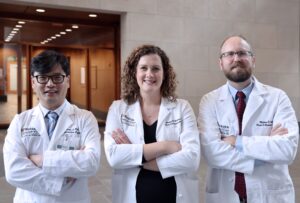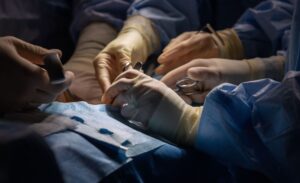Pediatric Plastic Surgery
On average, one in every five children in the U.S. has a special healthcare need that requires plastic surgery. Because the children our pediatric specialists treat are still growing, their treatment plans must take into account the ways in which their bodies will change over time. As a result, the techniques we use are intricate, innovative and specialized.
Caring for children with conditions that require plastic surgery requires a special kind of compassion. This can be a difficult time for parents, who need education and information to make informed decisions. Our team of specialists work closely with all involved to offer care that is comprehensive and personalized.
Overview
Children are affected by a number of conditions that merit surgical intervention. While traumatic injury does account for some injuries in children, congenital causes—those present at birth—are more common. Congenital conditions can cause facial differences, loss of muscle function, nerve conditions and vascular disorders, among other conditions. In some cases, our specialists use surgical techniques that can accommodate growth. In other cases, a treatment plan may include multiple surgeries occurring at key developmental milestones.
Craniofacial Differences
Congenital craniofacial differences are the most prevalent conditions in children who need plastic surgery. There are a number of conditions that can cause these differences, including:
Craniosynostosis
Craniosynostosis, a growth disorder affecting an infant’s skull. At birth, an infant typically has more bone plates in the skull than they will in adulthood. As the child grows, these bones shift to make room for the developing brain. In the first six months of a baby’s life, a developing brain will double in size. In craniosynostosis, the plates in the skull are fused together at birth, meaning they cannot shift to accommodate a growing brain. An infant with craniosynostosis may have problems with head shape and the absence of a soft spot on the head. Once detected and diagnosed, this condition is treatable, most often with surgery. Early intervention helps ensure a positive outcome for the child.
Cleft Lip and Cleft Palate
Cleft lip and cleft palate, called orofacial clefts when occurring together, are congenital birth conditions involving an underdeveloped upper lip and mouth. A child born with one or more of these conditions may have an opening in the roof of the mouth and a split, or division, in the lip leading up to the nose. Depending on the severity of the condition, the structure of the nose also may be affected. Eating, breathing, swallowing and speech development problems can occur. Children with this condition also are predisposed to hearing problems and, in adult years, sleep problems including obstructive sleep apnea.
Treatment for cleft lip and palate usually involves several surgeries, timed from infancy through early childhood, to reconstruct the upper mouth, lip and nose. Speech therapy also can be an important part of cleft lip and palate treatment. Our goal is to limit the number of surgical procedures a child needs through a multidisciplinary approach to treatment.
Our pediatric plastic surgery specialists can offer children and families the kinds of advanced techniques and treatments that help children born with cleft lip and palate live healthy and happy lives.
Conditions & Treatments
Our nationally recognized surgeons are dedicated to focusing on your unique pediatric plastic surgery needs and the following conditions:
- Cleft lip and palate
- Craniosynostosis
- Facial paralysis
- Brachial plexus palsy
- Hemifacial microsomia
- Orthognathic (jaw) surgery
- Facial fractures
- Rhinoplasty (Nose Surgery)
- Ear anomalies
- Mole removal (birthmarks)
- Scar revisions
- Adolescent breast surgery
- Congenital and traumatic hand issues
Why Choose Us?
Our specialists treat children requiring craniofacial surgery through the Cleft Palate and Craniofacial Institute at St. Louis Children’s Hospital. The Institute is the Midwest’s epicenter for treatment of this kind. This skilled and compassionate team has helped more than 4,300 children with cleft lip and cleft palate, and more than 3,000 children with other craniofacial conditions. We specialize in using nasoalveolar molding, also called NAM, for treating cleft lip, and we are renowned for our innovations in the treatment of craniosynostosis conditions in infants.
What to Expect
We understand the particular difficulty of having a child in need of surgical intervention, and our team is especially sensitive to certain constraints that may inhibit treatment. Should you seek care from our team, your treatment plan will include collaboration among specialists, including speech and physical therapists; oncologists, ear, nose and throat specialists; vascular surgeons and plastic surgeons. This kind of collaboration can result in fewer procedures and less frequent trips to the hospital.
Once you request an appointment, our team will contact you to schedule your initial consultation with a plastic surgeon. If your child is an established patient, we will coordinate our efforts with your current care team to provide you with the best treatment possible.
All pediatric patient appointments and plastic surgery procedures occur at St. Louis Children’s Hospital.


